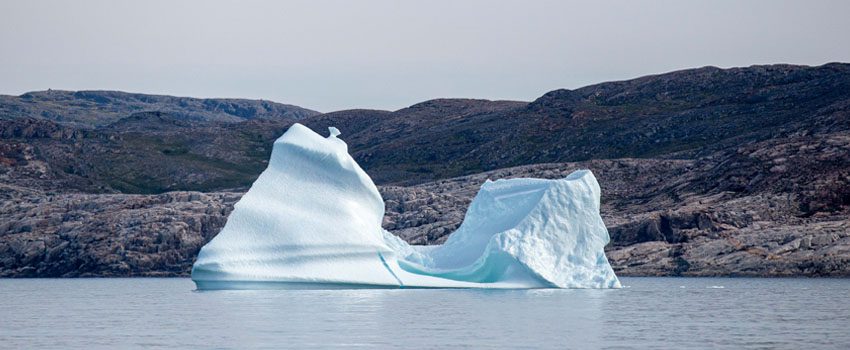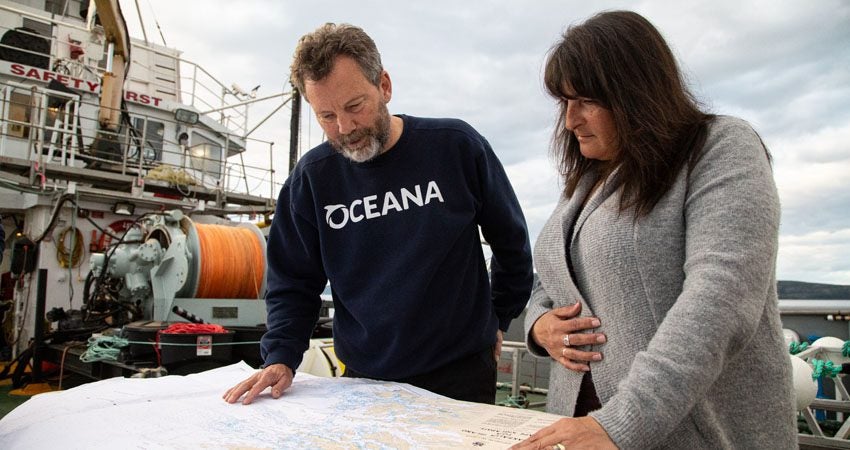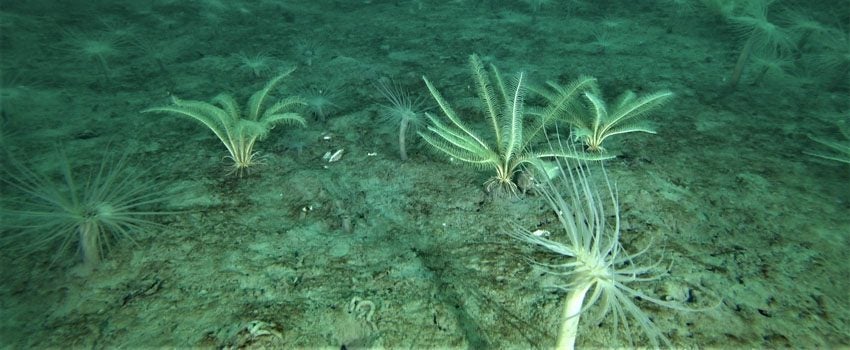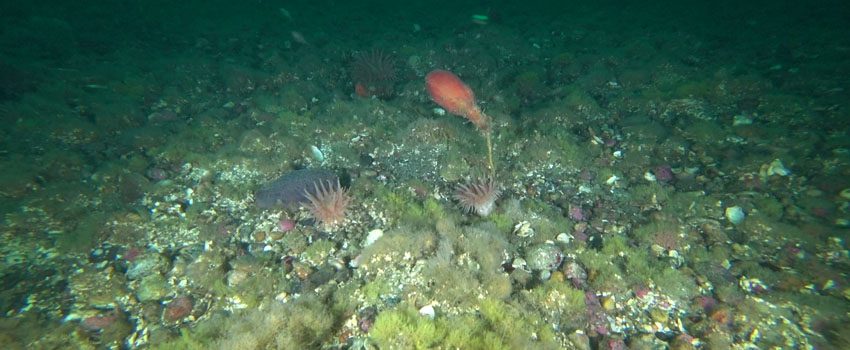March 10, 2023
New seafloor findings in Arctic waters of Nunatsiavut, Northern Labrador
Estimated reading time: 0 minutes
Topics: Protect Marine Habitat
Arctic lands and waters have been stewarded by Inuit for millennia, but today, these areas are facing new and growing challenges.

Canada is warming twice as fast as the rest of the world due to climate change, with Arctic regions warming at three times the speed. It’s more important than ever that we protect areas of ecological and cultural significance for the long-term health of the ocean and for the many people who rely on these areas.
Inuit communities are leading efforts to address threats that are altering livelihoods, including access to food from the lands and waters, and the ability to travel to areas over the sea ice. To help support the protection of Arctic waters, Oceana Canada partnered with the Nunatsiavut Government to study the ocean habitat off the coast of Northern Labrador. Three dive sites were selected because of their ecological, social and cultural importance to the region and to Nunatsiavummiut (Labrador Inuit who live in Nunatsiavut).

The Imappivut Expedition set out in the summer of 2019, conducting visual surveys of the seafloor off the coast of Hebron, Okak and Nain. After years of analyzing the detailed data and videos of the seafloor, core findings about these areas have now been published in the journal of Ecology and Society. This study fills important gaps in ecological knowledge where local Inuit knowledge and history abounds and identifies vulnerable ecosystems and species such as corals and sponges. Here are some of the key findings.
Hebron and Okak
Hebron is in a large fjord – a long, narrow and deep inlet, in northern Nunatsiavut. The Hebron fjord, with coastal cliffs reaching nearly 800 meters above the sea, has a long history as a former Inuit community and site of a Moravian church mission. The area is well known to Inuit for its abundance of natural resources and continues to be an important hunting and fishing area. During the expedition, community members visited Hebron, an area of deep cultural and historical significance, and the seafloor was surveyed at three sites within the inner and outer fjord. The journey continued south to Okak, a coastal bay. In the winter, sea ice forms over the bay and connects the land to offshore islands. This close connection between land and sea makes Okak Bay another important hunting and fishing site. The expedition team surveyed the sea bottom in three different sites around the inner inlet and outer islands of Okak bay.

By towing cameras through Hebron fjord and Okak Bay, the expedition found that the seafloor in both places is mostly soft mud- but still teeming with life! Tubeworms and brittlestars (a relative of the sea star) wiggle through the muddy bottom and recycle nutrients as they eat. Sea anemones (cerianthids) burrow into the mud and provide structure for fish to shelter in. Anemones play an important role in the cycle of nutrients and are critical for stimulating the growth of plankton, which are the basis of ocean food webs.

Nain
The final stop on the voyage was the island archipelago of Nain. This location is surrounded by islands between which are permanently ice-free patches called polynyas, referred to by locals as “rattles”. The lack of ice cover in rattles provide year-round access to resources from the sea, defining Nain as a rich harvesting ground that continues to support the largest present-day community in Nunatsiavut. Members of the community of Nain came to the ship during the expedition to share local knowledge on this dynamic area and review dive findings. Two separate sites were studied in Nain, found to be dominated by large boulders, small cobbles and sand with some spots being a mixture of all three. The ice-free areas in these diverse bottom habitats sport high numbers of fish, crabs and sea cucumbers. As rattles remain ice-free all year, sunlight can jump-start the growth of plankton in the springtime. This plankton is food for larger animals like invertebrates, such as crabs, as well as fish; marine life that feeds communities. The diversity of life documented on the seafloor in the rattle around Nain is a testament to the importance of Inuit knowledge in guiding Arctic research especially at a time where many Labrador Inuit share growing concern about the impacts of climate change.

What’s Next
These findings are being shared back to the communities of Nunatsiavut and will contribute to local understanding of what lives on the seafloor and how this connects to Inuit knowledge and usage of these areas. Understanding these patterns from the combined perspectives of Inuit and Western science in Nunatsiavut marine waters will guide resource management and protected area decisions.
Oceana Canada is continuing to campaign for protecting ocean habitats off all three coasts, supporting efforts through exploration, research, collaboration and advocacy. To learn more about Oceana Canada’s work to protect marine habitats and view more expedition photos and videos visit ProtectOceans.ca.

